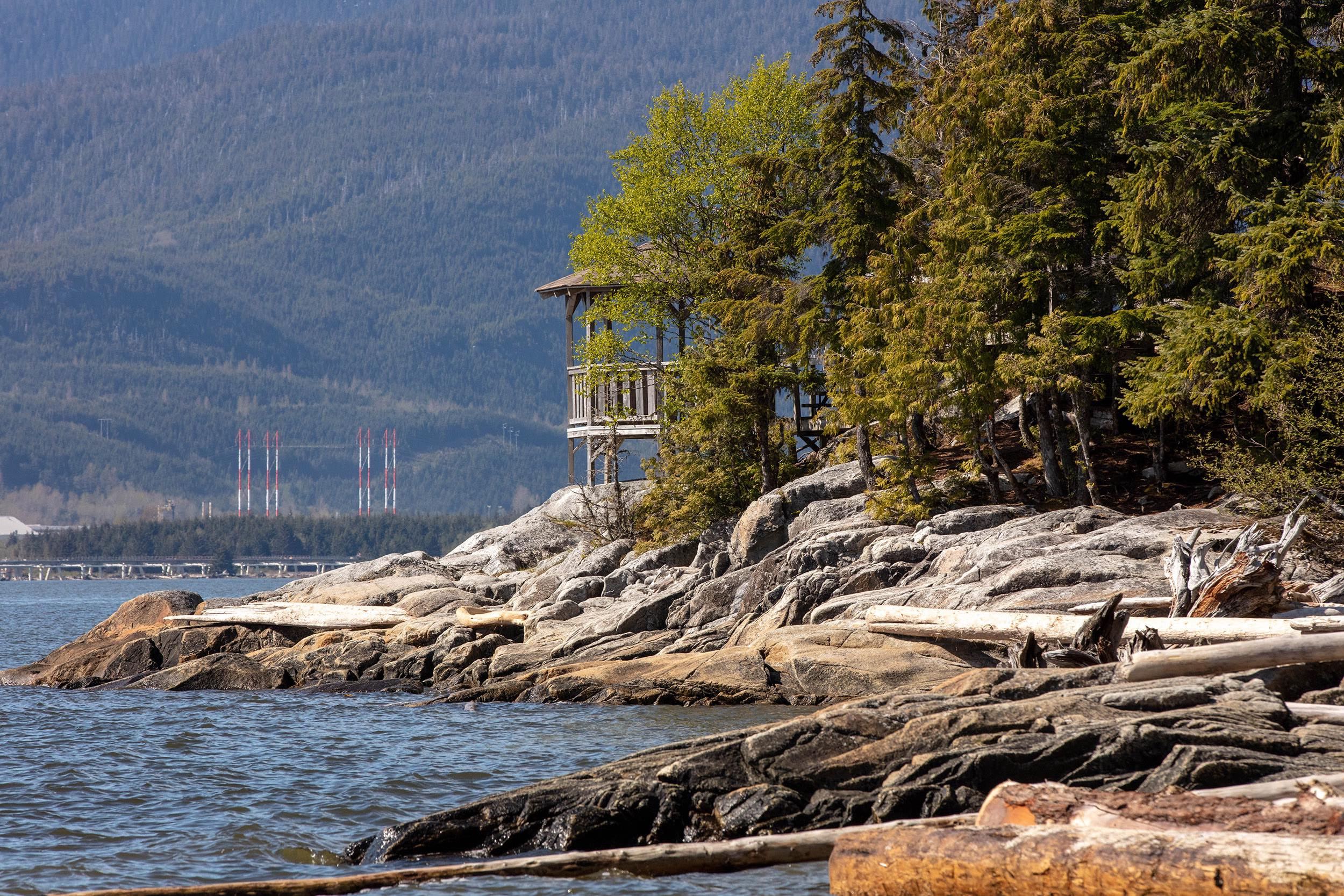
Environmental Protection
We focus on regulatory compliance, mitigate the impact our activities may have on the environment and meet our commitments to Indigenous and local communities.
Environmental protection has been a key driving force for us from the start. We have a deliberate focus on regulatory compliance and meeting commitments to Indigenous and local communities, while also maintaining a focus on mitigating impacts on the receiving environment.
LNG Canada is committed to monitoring and reporting the effects of our activities over the life of the project, with the goal of demonstrating ongoing responsibility and responsiveness to our proposed project effects. In fact, many of the conditions of our permits require this of us.
LNG Canada’s Environmental Assessment Certificate
LNG Canada received its Environmental Assessment Certificate in June 2015. This followed three years of consultation to learn about local communities and their aspirations, prepare a variety of studies, and ensure we have designed a project that meets or exceeds expectations.
LNG Canada’s Environmental Assessment Application covers all of the major project components – the LNG facility, the shipping route, the marine terminal, and the supporting infrastructure and facilities. It also included details regarding the project’s potential economic and social benefits, environmental impacts, and mitigation measures to avoid or reduce those impacts.
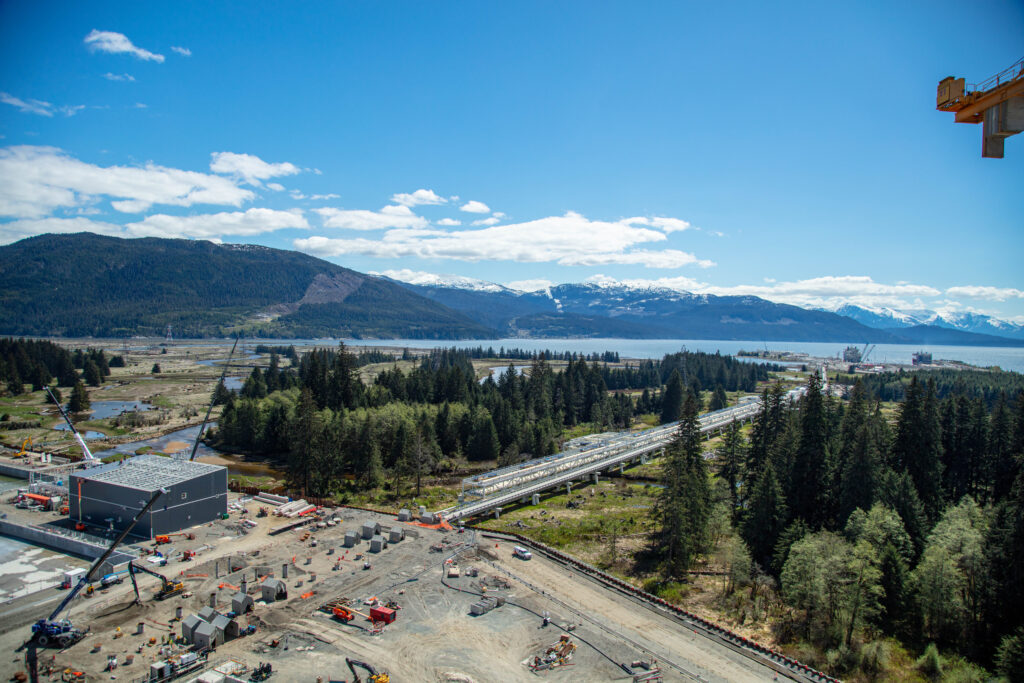

Offsetting Our Impact
Although our facility is built on an existing industrial site, our construction activities and operations impacted some vegetation including swamps, fens, marshes, and wetlands and altered the Kitimat River and its tributaries, which provide an important habitat for a variety of fish species. We worked hard to develop mitigation measures to avoid, reduce or replace our predicted effects on fish and fish habitats. We are committed to fully offsetting permanent loss or alteration of habitats, as required under the Canada Fisheries Act.
We are implementing a wide range of environmental offsets by creating, restoring, and enhancing wetlands that will serve to protect critical habitat in the freshwater, marine and estuary environments including:
- Creating spawning habitats
- Building side channels
- Increasing the complexity of existing fish habitat
- Creating wetlands
- Funding research into sustainable fish populations
Our Major Offset Projects
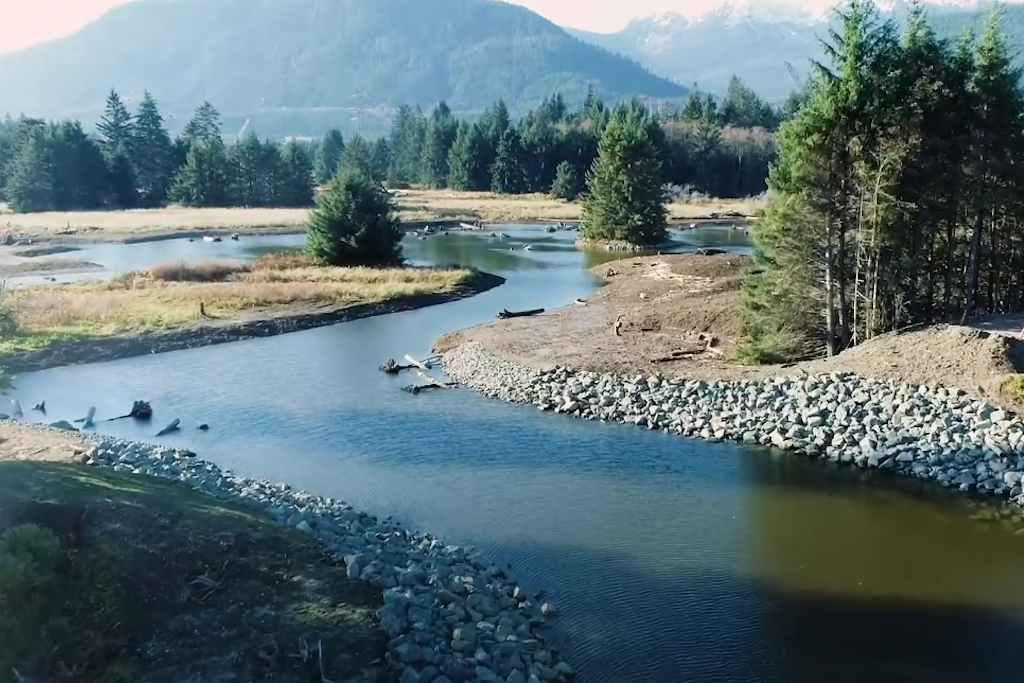
Kitimat River Side Channel (UPDATE)
We looked to maintain spawning habitats for salmon and provide freshwater, off-channel rearing habitats and refuge from the high flows in the Kitimat River mainstem, for juvenile salmon and oolichan.
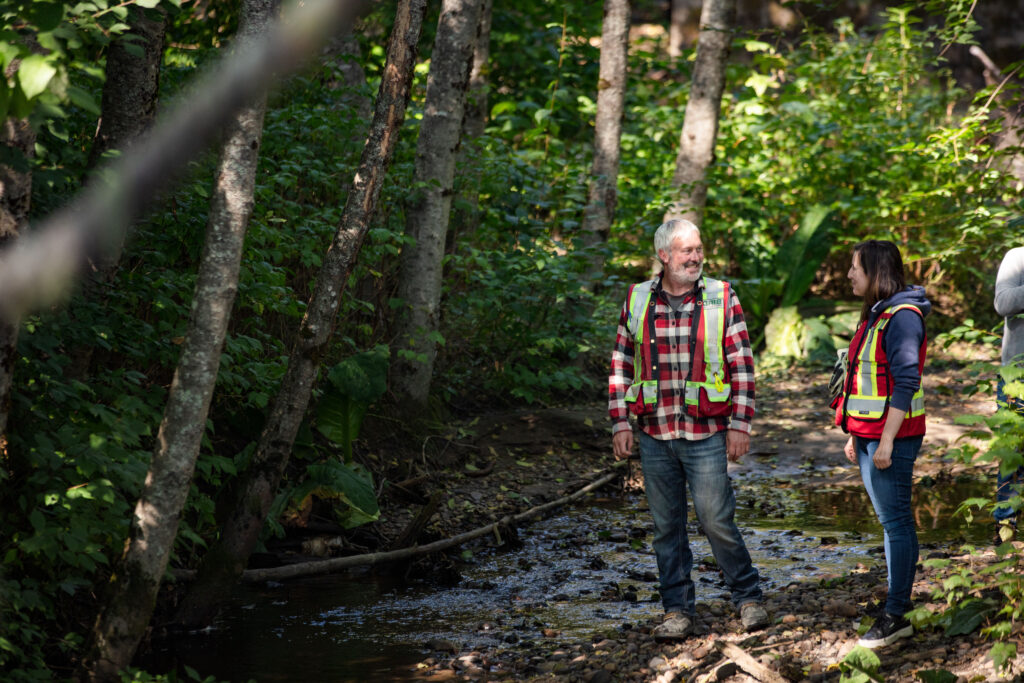
Restoring the Sumgas Creek
We are restoring the creek to its natural state to enable fish-rearing habitat following alterations made in the 1950s while improving public pathways and area enjoyment.
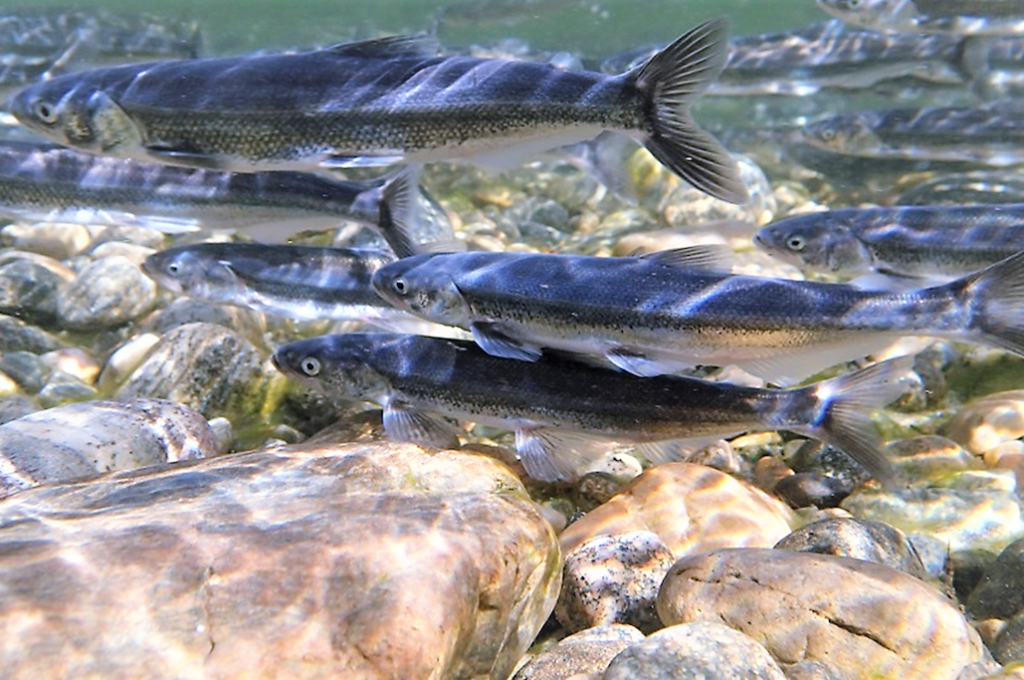
Conserving the Oolichan fish
We are supporting conservation efforts to protect the endangered oolichan and its habitat, which hold significant cultural and economic importance to Indigenous communities, including the Haisla Nation.
Environmental Management Plans, Notices, and Compliance Reports
LNG CANADA’S ENVIRONMENTAL MANAGEMENT PLANS
- Archaeological and Heritage Resources Management Plan
- Fisheries Act Authorization 15-HPAC-00585 Marine: Fish Habitat Offsetting Plan
- Fisheries Act Authorization 15-HPAC-00918 Workforce Accommodation Centre (FAA1): Fish Habitat Offsetting Plan
- Fisheries Act Authorization 16-HPAC-00220 LNG Facility (FAA2): Fish Habitat Offsetting Plan
- Fisheries Act Authorization 16-HPAC-01079 Supporting Infrastructure (FAA3): Fish Habitat Offsetting Plan
- Wetland Compensation Plan
IMPACT ASSESSMENT AGENCY OF CANADA (IAAC) ANNUAL REPORTS
- JUNE 30, 2023 – LNG CANADA 2022-2023 IAAC ANNUAL REPORT
- JUNE 30, 2023 – LNG CANADA 2022-2023 IAAC ANNUAL REPORT, EXECUTIVE SUMMARY – FRENCH
- June 30, 2022 – LNG Canada 2021-2022 IAAC Annual Report
- June 30, 2022 – LNG Canada 2021-2022 IAAC Annual Report, Executive Summary – French
- June 30, 2021 – LNG Canada 2020-2021 IAAC Annual Report
- June 30, 2021 – LNG Canada 2020-2021 IAAC Annual Report, Executive Summary – French
- August 24, 2020 – LNG Canada 2019-2020 IAAC Annual Report
- August 24, 2020 – LNG Canada 2019-2020 IAAC Annual Report, Executive Summary – French
- June 28, 2019 – LNG Canada 2018-2019 CEAA Annual Report
- June 28, 2018 – LNG Canada 2017-2018 CEAA Annual Report
- June 28, 2018 – LNG Canada 2017-2018 CEAA Annual Report, Executive Summary – French
- June 28, 2017 – LNG Canada 2016-2017 CEAA Annual Report
- June 28, 2016 – LNG Canada 2015-2016 CEAA Annual Report
- September 15, 2015 – LNG Canada Letter CEAA 30 day Implementation Schedule
CANADIAN ENVIRONMENTAL ASSESSMENT AGENCY (CEAA) IMPLEMENTATION SCHEDULES
- MAY 25, 2023: LNG CANADA LETTER CEAA IMPLEMENTATION SCHEDULE UPDATE
- June 14, 2021: LNG Canada Letter CEAA Implementation Schedule Update
- July 12, 2019: LNG Canada Letter CEAA Implementation Schedule Update
- July 4, 2018: LNG Canada Letter CEAA Implementation Schedule Update
- June 26, 2017 – LNG Canada Letter CEAA Implementation Schedule Update
- December 2, 2016 – LNG Canada Letter CEAA Implementation Schedule Update
- April 20, 2016 – LNG Canada Letter CEAA Implementation Schedule Update
- September 15, 2015 – LNG Canada Letter CEAA 30 day Implementation Schedule
ENVIRONMENTAL ASSESSMENT OFFICE (EAO) REPORTING
- LNG Canada 2023 EAO Annual Report
- LNG Canada 2022 EAO Annual Report
- LNG Canada 2021 EAO Annual Report
- LNG Canada 2020 EAO Annual Report
- LNG Canada 2019 EAO Annual Report
- LNG Canada 2018 EAO Annual Report
- LNG Canada 2017 EAO Annual Report
- LNG Canada 2016 EAO Annual Report
- LNG Canada 2015 EAO Annual Report
ENVIRONMENTAL PROTECTION NOTICES
- SEPTEMBER 28, 2023 – ENVIRONMENTAL PROTECTION NOTICE – APPLICATION FOR APPROVAL
- SEPTEMBER 21, 2023 – ENVIRONMENTAL PROTECTION NOTICE – PERMIT AMENDMENT
- May 18, 2023 – Environmental Protection Notice – application for approval
- August 16, 2022 – Environmental Protection Notice – application for approval
- October 20, 2021 – Environmental Protection Notice- application for approval
- December 23, 2020 – Environmental Protection Notice – permit amendment
- August 14, 2020 – Environmental Protection Notice – application for approval
- April 3, 2020 – Environmental Protection Notice – permit amendment
- April 3, 2020 – Environmental Protection Notice – application for approval
LNG CANADA SOCIAL MANAGEMENT ROUNDTABLE / CLISMP REPORTING
Quarterly Social Management Roundtable (SMR) Reports:
- LNG CANADA NOVEMBER 2023 SMR SUMMARY REPORT
- LNG CANADA AUGUST 2023 SMR SUMMARY REPORT
- LNG Canada May 2023 SMR Summary Report
- LNG Canada Q4 2022 SMR Summary Report
- LNG Canada Q3 2022 SMR Summary Report
- LNG Canada Q2 2022 SMR Summary Report
- LNG Canada Q1 2022 SMR Summary Report
- LNG Canada Q4 2021 SMR Summary Report
- LNG Canada Q3 2021 SMR Summary Report
- LNG Canada Q2 2021 SMR Summary Report
- LNG Canada Q1 2021 SMR Summary Report
- LNG Canada Q4 2020 SMR Summary Report
- LNG Canada Q3 2020 SMR Summary Report
- LNG Canada Q2 2020 SMR Summary Report
- LNG Canada Q1 2020 SMR Summary Report
- LNG Canada Q4 2019 SMR Summary Report
- LNG Canada Q3 2019 SMR Summary Report
- LNG Canada Q2 2019 SMR Summary Report
Annual Community Level Infrastructure and Services Management Plan (CLISMP) Reports:
- LNG Canada Community Level Infrastructure and Services Management Plan Annual Report 2022
- LNG Canada Community Level Infrastructure and Services Management Plan Annual Report 2021
- LNG Canada Community Level Infrastructure and Services Management Plan Annual Report 2020
- LNG Canada Community Level Infrastructure and Services Management Plan Annual Report 2019
